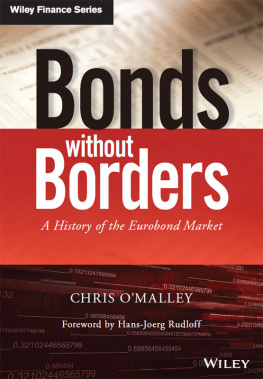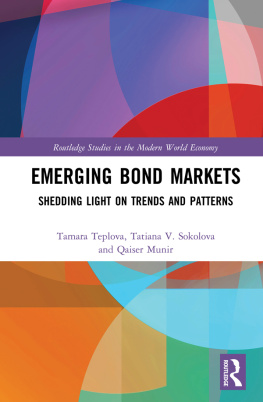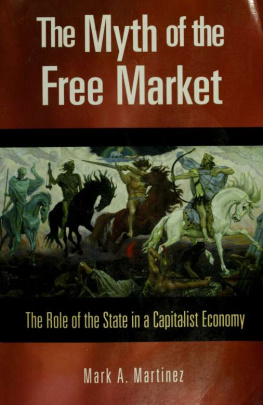
For other titles in the Wiley Finance series please see www.wiley.com/finance
Bonds Without Borders
A History of the Eurobond Market
CHRIS OMALLEY
This edition first published 2015
2015 Chris O'Malley
Registered office
John Wiley & Sons Ltd, The Atrium, Southern Gate, Chichester, West Sussex, PO19 8SQ, United Kingdom
For details of our global editorial offices, for customer services and for information about how to apply for permission to reuse the copyright material in this book please see our website at www.wiley.com.
The right of the author to be identified as the author of this work has been asserted in accordance with the Copyright, Designs and Patents Act 1988.
All rights reserved. No part of this publication may be reproduced, stored in a retrieval system, or transmitted, in any form or by any means, electronic, mechanical, photocopying, recording or otherwise, except as permitted by the UK Copyright, Designs and Patents Act 1988, without the prior permission of the publisher.
Wiley publishes in a variety of print and electronic formats and by print-on-demand. Some material included with standard print versions of this book may not be included in e-books or in print-on-demand. If this book refers to media such as a CD or DVD that is not included in the version you purchased, you may download this material at http://booksupport.wiley.com. For more information about Wiley products, visit www.wiley.com.
Designations used by companies to distinguish their products are often claimed as trademarks. All brand names and product names used in this book are trade names, service marks, trademarks or registered trademarks of their respective owners. The publisher is not associated with any product or vendor mentioned in this book.
Limit of Liability/Disclaimer of Warranty: While the publisher and author have used their best efforts in preparing this book, they make no representations or warranties with the respect to the accuracy or completeness of the contents of this book and specifically disclaim any implied warranties of merchantability or fitness for a particular purpose. It is sold on the understanding that the publisher is not engaged in rendering professional services and neither the publisher nor the author shall be liable for damages arising herefrom. If professional advice or other expert assistance is required, the services of a competent professional should be sought.
Library of Congress Cataloging-in-Publication Data
O'Malley, Chris.
Bonds without borders : a history of the Eurobond market / Chris O'Malley.
pages cm
Includes bibliographical references and index.
ISBN 978-1-118-84388-8 (cloth)
1. Euro-bond marketHistory. I. Title.
HG3896.O43 2015
332.6323094dc23
2014029870
A catalogue record for this book is available from the British Library.
ISBN 978-1-118-84388-8 (hbk) ISBN 978-1-118-84387-1 (ebk)
ISBN 978-1-118-84386-4 (ebk) ISBN 978-1-119-01084-5 (ebk)
Cover Design: Wiley
Cover Images: top photo: iStockphoto.com/peepo
bottom photo: iStockphoto.com/ricardoinfante
To my dear sister Kath, and sister-in-law Jan, who lost their battles with cancer during the writing of this book.
Foreword
Bonds Without Borders is a testimony to a fascinating period in the development of the international financial markets. Chris O'Malley in his different positions at Credit Suisse First Boston and Samuel Montagu was an active participant in the fastest growing securities market in the world. He has undertaken the difficult task of describing the different stages of the history of modern international bond markets. His painstaking research into the defining moments of the market deserves great applause and most importantly gives the reader a fascinating picture of the dynamic pioneering work of investment banks and their people. It shows their unlimited commitment to the expansion and creation of a borderless world in which capital is moved to where it is most needed, with the best risk adjusted returns. The missionary spirit of people like Chris helped to put together, piece by piece, a market that today provides US$2.5 trillion to supranationals, governments, and corporations alike.
Chris's insights into the workings of the market have allowed him to concentrate on the essentials and enable the reader to understand the enormous progress achieved over the years in allocating capital through free markets. This book catches the spirit which drove the markets towards globalisation; providing an enormous benefit to emerging countries, and helping billions of people to achieve economic progress. This book offers a very timely reminder of how important open markets are for the unrestricted flow of ideas, goods, people and capital. Chris O'Malleys' book makes a significant contribution to a better understanding of the great benefits open financial markets have brought to the world.
In addition, this book demonstrates how important it is for the actors in the market to exercise their profession with the necessary care and prudence.
Hans-Joerg Rudloff
Chairman of Kidder Peabody 19781980,
Chairman of Credit Suisse First Boston 19891998 and
Chairman of the investment bank at Barclays from 1998 to 2014
Introduction: Fifty Years of the Eurobond Market
It was Paul who came up with the idea. Instead of singing the usual love song lyric of I love you, it should be in the third person She loves you and other band members would respond with the refrain yeah, yeah, yeah. A few days after writing the song, The Beatles gathered at Abbey Road Studios, London, on 1 July 1963 to record She Loves You for release as a single. Released in the following month it was a gigantic success, becoming the best-selling single of 1963, and remains the best-selling Beatles' single in Britain. It was the breakthrough that led The Beatles to international success.
As that recording session in Studio 2, Abbey Road was getting under way, five miles away in Gresham Street in the City of London a group of senior international bankers and lawyers were signing a subscription agreement for an international bond issue for Autostrade, an Italian road builder. It was the first of a new type of financing targeted at international investors. This new Eurobond, as it came to be known, represented an historic breakthrough in the international financial markets.
* * *
The Eurobond market, the largest international capital market the world has known, has a confusing name. Eurobond doesn't refer exclusively to bonds issued in Europe or indeed, bonds denominated in the euro currency. (Nor does it refer to the term chosen by the authorities during the current financial crisis to describe a possible European sovereign bond underwritten jointly and severally by all Eurozone governments.) The term Eurobond defines the type of security rather than the currency or domicile of the obligation.
A web search reveals the popular, but imprecise, definition that it is a bond issued in a currency other than the currency of the borrower. But this could also describe a foreign bond. A foreign bond issue is one offered by a foreign borrower to investors in a national capital market and denominated in that nation's currency, for example, the Kingdom of Norway issuing a dollar bond in New York. Helpfully, foreign bond markets have all attracted nicknames: so a foreign bond in the US market is a Yankee bond, a foreign bond in the Japanese domestic market is a Samurai bond, and a foreign bond issued in the Australian market is a Kangaroo bond, and so on. A foreign bond issue will always follow the rules and practices of the relevant domestic securities market.
Next page








